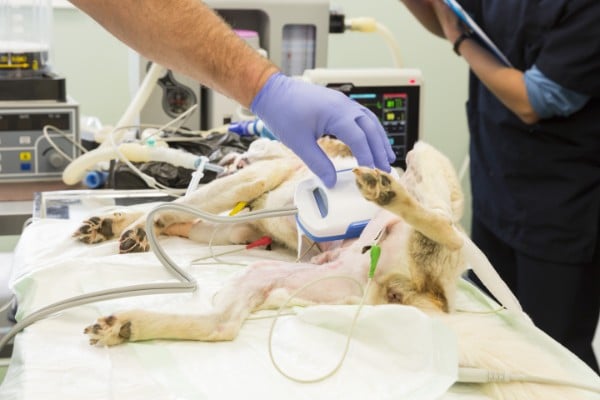september, 2024

Course Details
Week 1 Pre-anaesthetic Assessment and Patient Preparation for Anaesthesia Patient preparation ASA status and patient assessment Use of checklists Breathing systems and checks What are the aims of anaesthetic premedication Practical considerations What agents are
Course Details
Week 1
Pre-anaesthetic Assessment and Patient Preparation for Anaesthesia
Patient preparation
ASA status and patient assessment
Use of checklists
Breathing systems and checks
What are the aims of anaesthetic premedication
Practical considerations
What agents are available
Learning objectives
After completion of this week, participants should be able to:
Correctly identify an appropriate breathing system and safe fresh gas flow rates for individual patients
Confidently check an anaesthesia machine and breathing system to ensure they are safe to use
Have an understanding of the ASA grading system and be able to designate and apply which status is appropriate for their individual patients
Identify the benefits of using a peri-anaesthetic checklist and decide whether this can be advocated for their working environment
List the reasons for patient premedication and be able to identify practical aspects and factors within the clinic which may affect the efficacy of premedication
Identify the most common pharmacological agents used for sedation and anaesthesia
Week 2
Anaesthetic Monitoring – Neurological and Respiratory System
Basic, hands on monitoring (neurological system)
Respiratory monitoring
Other
Learning objectives
After completion of this week, participants should be able to:
Recognise what are normal physiological parameters with regards to the neurological and respiratory systems for individual patients undergoing anaesthesia
Name the most common pieces of monitoring equipment for the respiratory system and be able to recognise what is a normal value/trace for each of these pieces
Start to develop the skills to apply this knowledge to individual cases within the clinic with use of the available equipment
Week 3
Anaesthetic Monitoring – Cardiovascular System
Cardiovascular monitoring
Basic, hands on
Blood pressure
Pulse oximetry
ECG
Learning objectives
After completion of this week, participants should be able to:
Recognise what are normal physiological parameters with regards to the cardiovascular system for individual patients undergoing anaesthesia
Name the most common pieces of monitoring equipment for the cardiovascular system and be able to recognise what is a normal value/trace for each of these pieces
Start to develop the skills to apply this knowledge to individual cases within the clinic with use of the available equipment
Week 4
Principles of Perioperative Care including Anaesthetic Recovery
Anaesthetic risk
Airway management including tracheal intubation
Patient positioning
Eye care
Temperature
Fluid therapy
Patient recovery
Learning objectives
After completion of this week, participants should be able to:
Identify important factors which require attention and care during a patient’s anaesthetic in order to optimise the patient’s peri-anaesthetic experience
Accurately calculate fluid rates for individual patients and apply this to their clinical setting, whether this be with use of fluid pumps/syringe drivers or via gravity (calculating a drop rate)
List available methods for patient warming, with recognition of the need to counteract patient hypothermia and the potential risks associated with warming device use
Recognise the critical importance of patient monitoring during anaesthetic recovery.
Describe the potential difficulties that may be encountered during the anaesthetic recovery period
Week 5
Pain Assessment
Importance of pain assessment and management
Challenges of pain assessment in veterinary species
Pain assessment tools
Learning objectives
After completion of this week, participants should be able to:
Recognise the potential difficulties in performing pain assessment in veterinary species.
Name a number of pain assessment tools
Advocate a pain assessment tool that would be suitable for their working environment
Recognise when patients (cats and dogs) are deemed to be painful
Week 6
Analgesia for Acute Perioperative Pain
A brief overview on the pain pathway with introduction to the concepts of multimodal and pre-emptive analgesia
Analgesic options, including:
A brief overview of the pharmacological means
Non-pharmacological methods
Learning objectives
After completion of this week, participants should be able to:
Explain why provision of analgesia is important for patient welfare
Describe the concepts of multimodal and pre-emptive analgesia, with emphasis on why these are important for patient analgesia
Explain why provision of analgesia is important
List potential analgesic options and apply this knowledge to consider appropriate therapeutic plans for individual patients
Have an appreciation of the important role that a veterinary nurse can play in providing non-pharmacological methods of analgesia and improving the patient experience
This course will be fully tutored by Becky Robinson and will consist of 15 hours of CPD (15 points for Australia and New Zealand) and will be provided in various formats, including tutorials, tasks, case studies, forum discussions and quizzes. This course is tutored for 6 weeks, followed by a two week extension of untutored ‘catch up’ time, before the course officially ends.
All delegates will then have unlimited lifetime access to the learning material for future reference
Time
September 2 (Monday) - October 11 (Friday)
Location
Online
Speaker
Rebecca RobinsonBVSc, MVetMed, DipECVAA, FHEA, MRCVS EUROPEAN & RCVS SPECIALIST IN VETERINARY ANAESTHESIA, DAVIES VETERINARY SPECIALISTS



0 Comments